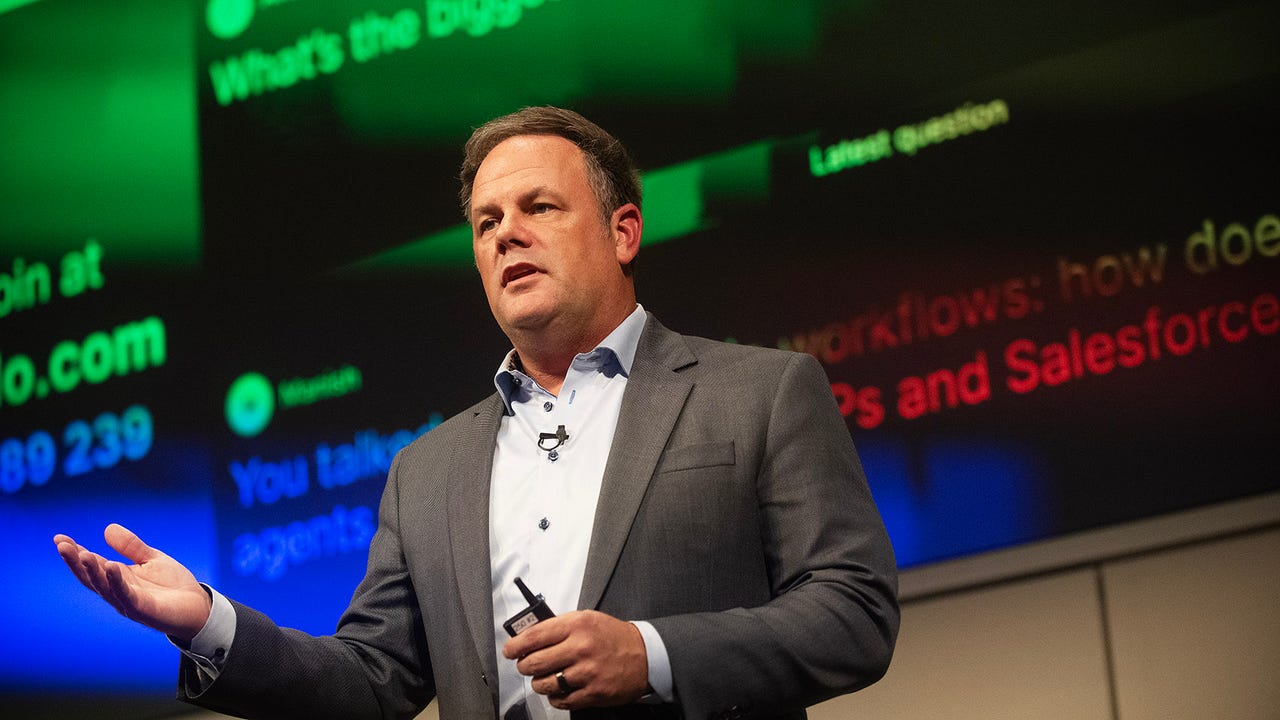Among the top items keeping CIOs up at night is understanding who should lead the AI strategy at their organizations.
SAS CIO Jay Upchurch told InformationWeek that CIOs around the world are grappling with determining where the responsibility lies for organizational AI strategies and who should take the lead on company-wide AI mandates. The CIO will, of course, implement AI technologies, Upchurch explained, but settling on who leads the charge on AI strategy is a separate challenge.
“Is it driven from the top down, as a board or CEO mandate? Is it a groundswell of interest from employees?” Upchurch said.
SAS, for its part, has taken a multi-pronged approach to implementing its AI strategy within the organization, ensuring buy-in from both the executive team and the employee base.
Having support from leadership across the organization has been essential to realizing this broad-based approach to AI implementation. Each division within the organization has a tech leader who can advocate for their division and help the IT team better understand their technology requirements, Upchurch said.
At a recent SAS event, CTO Bryan Harris also emphasized the importance of company-wide buy-in for AI when deploying the technology. The first step in AI deployments, he said, is “building trust between you and your workforce.”

(Source: Shane Snider/Data Center Knowledge) Bryan Harris, CTO of SAS, discussed the company’s approach to AI at a SAS Championship 2025 event.
“Companies need bold and inspirational leaders who invest in their workforce through this continued change,” Harris said. “As you invest in people and their skills, you build trust. And building trust increases AI adoption, which in turn increases your competitive advantage. It’s all connected.”
Among the leaders in charge of AI strategy at SAS is an AI operating council that includes eight people from the executive team and other levels of management. The council meets on a regular basis to “review requests for new AI that might come into the enterprise,” Upchurch said.
One topic the council has discussed is how regional regulations might affect the deployment of new AI technologies in the various countries where SAS does business.
“So it’s not IT or legal saying ‘yes or no.’ It’s a group of individuals that have an interest in the safety and security of our employees, our data, our company’s data, and our customers’ data,” Upchurch said.
A Productivity-First Approach to AI
Without enterprise-wide support, IT teams run the risk of rolling out an expensive AI that sits on a shelf collecting dust, he added. That’s partly why SAS chose to first roll out AI to support employee productivity.
Tools that automate and assist with mundane tasks, like Microsoft Copilot or Anthropic’s Claude, can be tailored to employees’ specific roles, helping them feel valued and giving them the “gift of time” to focus on higher-impact work, Upchurch said.
Harris said the AI focus on productivity has already proved a boon for the company. “When [employees] offload this tedious work, they have more time to think, evaluate and make better decisions,” he said. “No one is debating the ROI of this first phase.”
Benefits of an AI-Ready Workforce
Indeed, SAS employees are fairly knowledgeable about AI and have been quick to apply it, Upchurch said. In September, SAS implemented a Microsoft Copilot license for SAS employees to build their own AI agents to support their productivity goals. By early October, employees had created 760 AI agents.
Having an AI-literate employee base has been helpful “in terms of speed and efficiency” for deploying AI within the organization, Upchurch added.
SAS’ 12,000 employees are “highly informed about what AI is and how to do it the right way,” Upchurch said. “When I’ve talked to a lot of my CIO peers, they struggle with that, so they’re out chasing data literacy or AI literacy or something else with their own employee base.”
Still, change management is not an easy task for any organization, Upchurch said.
“You can clean data up, and with enough money and time you can do a project and deliver a capability, but getting people to embrace and change their mindset is hard work,” he said. “The greatest technology, the greatest projects, can land flat if the company or the organization is not ready to receive it, and that’s especially true in AI.”
What’s Next for SAS’ AI Strategy: Reimagining Workflows
After employee productivity — the first area of focus in the company’s internal AI strategy — SAS will focus on infusing AI into work processes to “reimagine workflows,” and using AI for autonomous operations, Upchurch said. The aim is to rethink how work gets done with AI, instead of simply automating existing processes.
In the long term, Upchurch said SAS is focused on using AI for autonomous operations such as automatic software anomaly detection and remediation. Meanwhile, it’s the “amazing innovation and curiosity culture,” not the technology, that accounts for the company’s progress.
“When we see those two things come together, it fuels one another, and it just continues to breed success for us,” he said.


